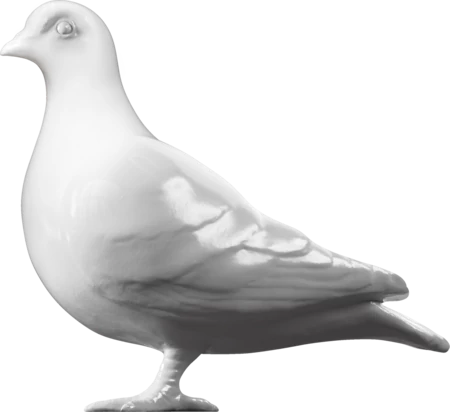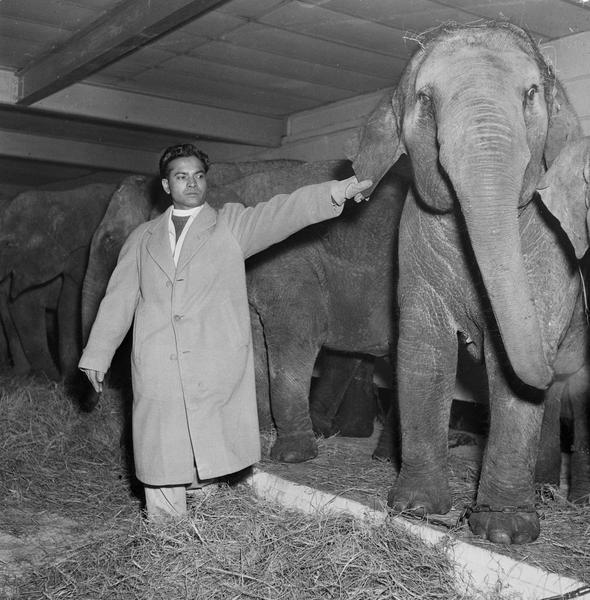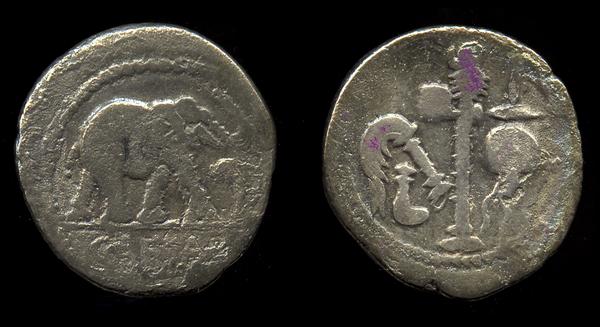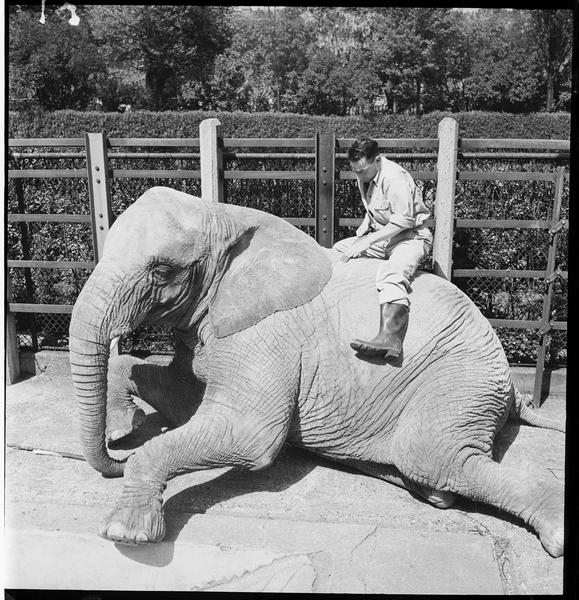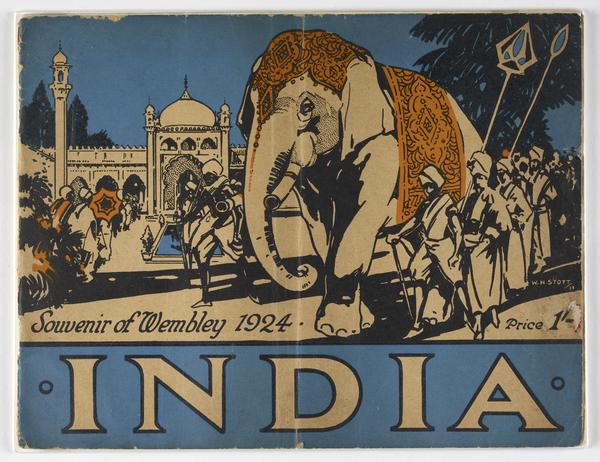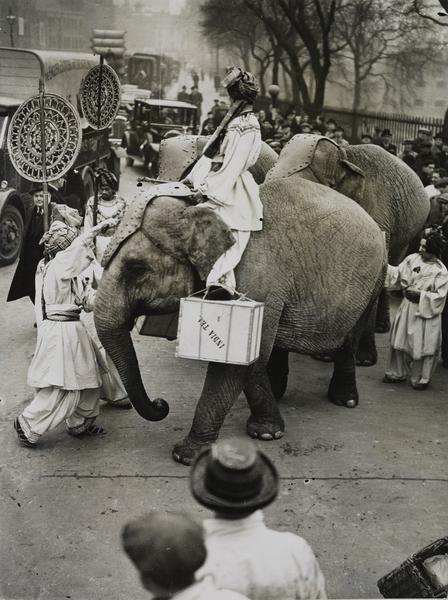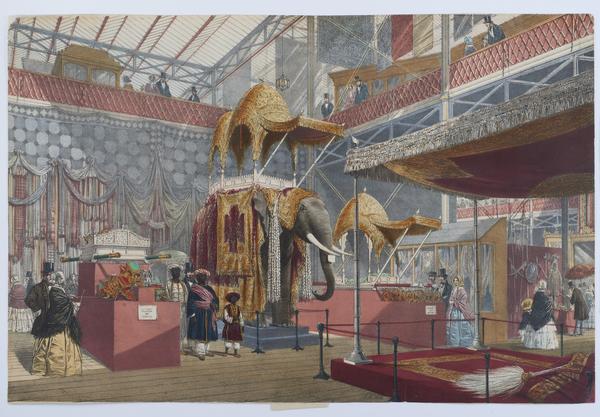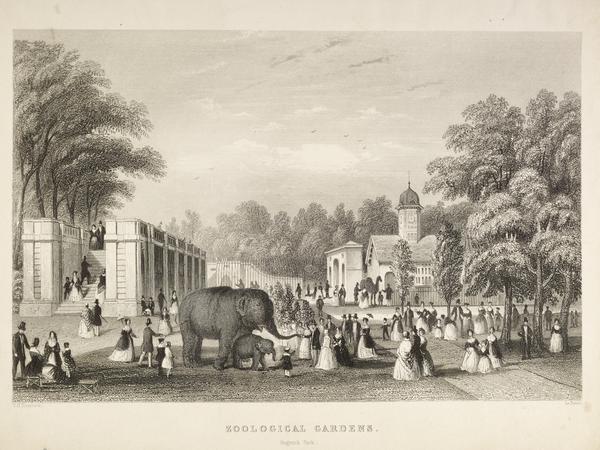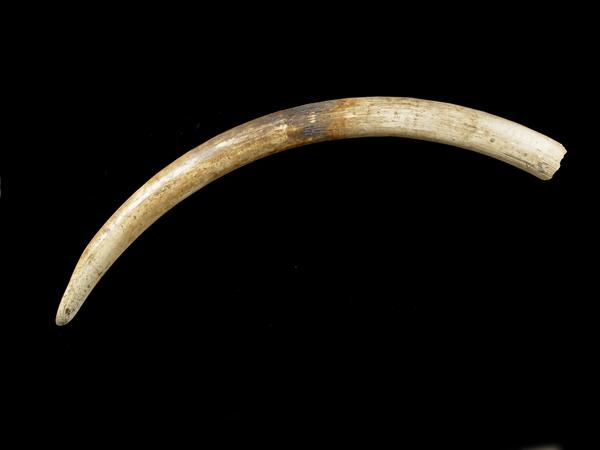Jumbo the Elephant
Jumbo the Elephant was one of London’s first animal celebrities. He’s also the reason we use the word jumbo to describe something massive.
London Zoo, Regent’s Park
1865–1890
A jumbo-sized celebrity
After arriving at London Zoo in 1865, Jumbo the Elephant became one of the star attractions.
Despite a popular appeal to keep him there, Jumbo was sold to the entertainer PT Barnum, who took Jumbo to America as part of his circus. Jumbo died in an accident in 1885, but his skeleton and stuffed skin continued to be used as part of Barnum’s show – and returned to London in 1890.
What do you think about the way Jumbo was treated?
African elephants are no longer kept at London Zoo, although smaller Indian elephants are held at another site outside London, in Whipsnade.
Many people today would be uncomfortable with animals being used for entertainment. In 2019 the UK government passed the Wild Animals in Circuses Act. This banned circuses from using lions, camels, elephants and any other animal which isn’t commonly domesticated. Dogs, cats, horses and rabbits were not included in the ban.
How did Jumbo come to London?
Jumbo was born in Sudan, in east Africa. After his mother was killed by poachers, he was imported to Europe and moved into London Zoo in 1865.
He wasn’t in a good state when he arrived. “A more deplorable, diseased and rotten creature never walked God’s earth,” wrote Matthew Scott, a zookeeper, who helped nurse Jumbo back to health.

Visitors had the chance to ride Jumbo as part of the London Zoo experience.
Why was he called Jumbo?
Jumbo was an African bush elephant, one of the largest ever seen in Europe. While at the zoo, Jumbo weighed over 6 tonnes and was about 3.2 metres tall at the shoulder.
One of the zookeepers, Anoshan Anathjeysari, named him Jumbe, the Swahili word for chief. This is where we get the English word jumbo – meaning something extremely large.
Elephants had been seen in London before, but Jumbo became a favourite of Londoners. The zoo allowed children, including Queen Victoria’s, to ride on Jumbo’s back using a large saddle with several seats.
Barnum buys Jumbo
In 1882, London Zoo sold Jumbo to the American entertainer and showman Phineas T Barnum. Barnum wanted to display Jumbo in his circus, known as the Greatest Show on Earth.
While at the zoo, Jumbo had been showing signs of anger and unhappiness during the night. For example, he had ground down his tusks on the sides of his enclosure.
This behaviour was due to toothache – partly caused by visitors feeding him sugary treats.
The managers of the zoo worried that he would hurt someone. But the decision to sell Jumbo caused a public outcry. Newspapers and members of the public petitioned Barnum, asking him to let Jumbo stay in London.
Barnum refused, happy that his elephant was receiving so much publicity. Barnum toured America with Jumbo, advertising him as the world's largest elephant.

A poster advertising Jumbo's "return" to London, this time as a skeleton and stuffed model.
Jumbo’s return to London
In 1890, Barnum's Greatest Show on Earth returned to London, bringing Jumbo with it.
But Jumbo had been killed in a train crash in Canada in 1885. What Barnum brought back to London was his preserved skeleton and stuffed skin. It was a sad fate for a beloved animal.
In the printed programme below from our collection, Barnum claims that Jumbo was hit by a train while trying to save the life of another circus animal – the dwarf elephant Tom Thumb. But this was probably a sensational lie.

The inside of a programme advertising Barnum's Jumbo's return to Britain, which includes his life story and measurements.
Jumbo's “perfect and tremendous skeleton”
Determined not to lose one of his star attractions, PT Barnum had Jumbo's skeleton preserved so that he could still display it.
This programme credits Professor Henry A Ward, who "after months of arduous labour, triumphantly succeeded in
perpetuating Jumbo in unimpaired grandeur of presence and absolute perfection of form".
The Greatest Show on Earth also exhibited Jumbo's stuffed skin. In the New York Times, the result was said to be "the restoration of Jumbo, the renaissance of elephantine magnificence".
Jumbo made Barnum lots of money
The programme also says that Barnum had been offered “a big fortune” to sell Jumbo.
But Barnum refused to consider selling Jumbo back to the London Zoo while he was still alive. In the first three weeks of exhibiting Jumbo in New York, Barnum made back the £2,000 he had paid for the elephant in Britain.
The “largest in the world”
Barnum claimed that Jumbo was the largest elephant in the world. The programme features detailed measurements to supposedly prove his size – 3.7 metres tall and 7 tonnes in weight.
While he was very big, Jumbo never reached that size. He was still growing when he died.
